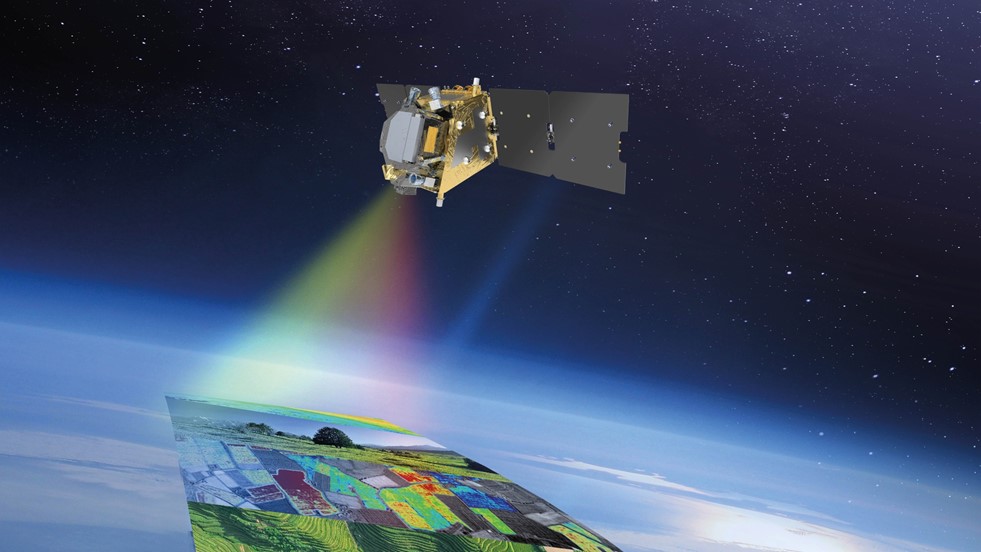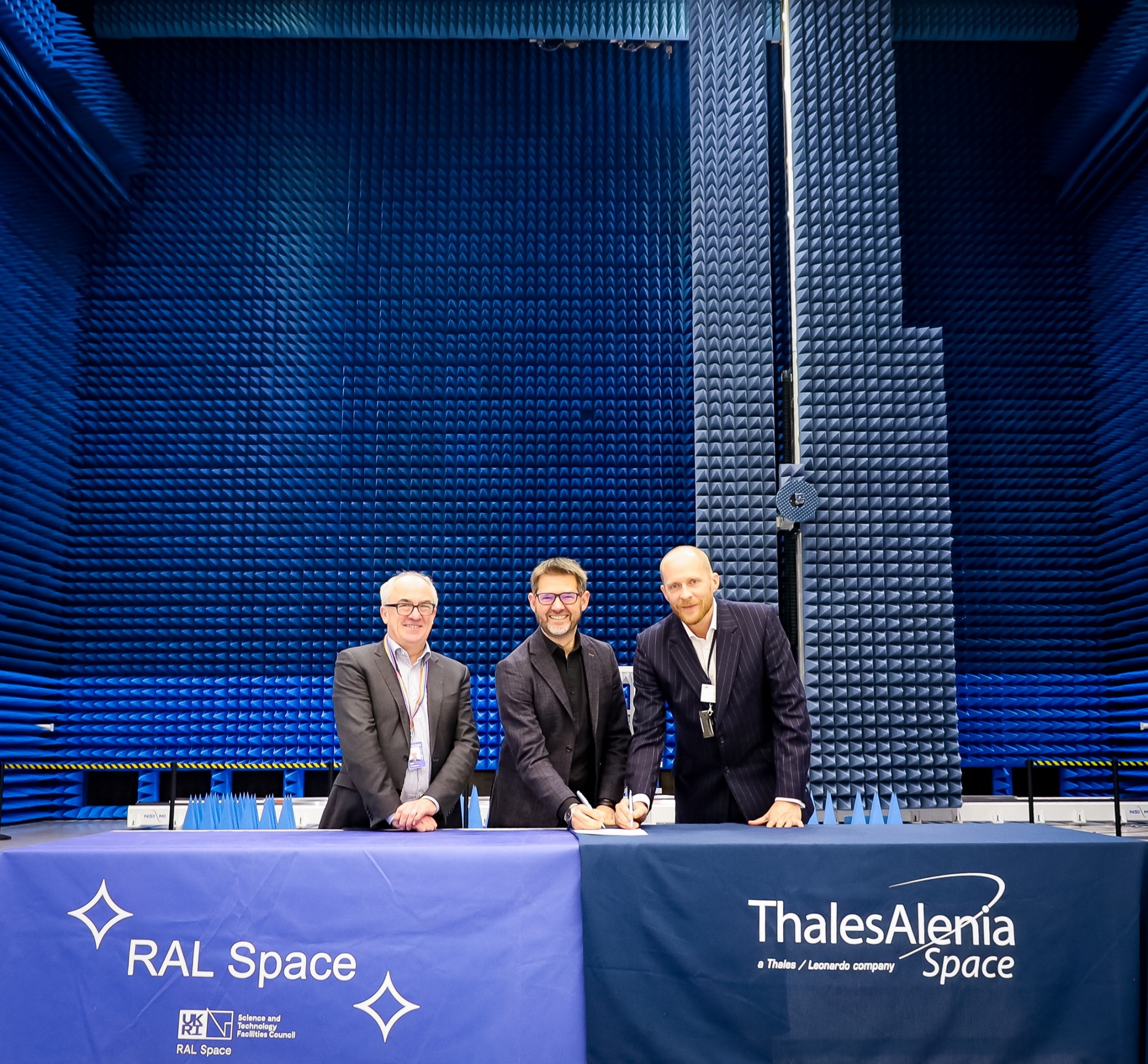
Built by Thales Alenia Space, FLEX (Fluorescence Explorer) is the second satellite to be confirmed for the new £116m facility, which is due to begin operations in mid-2024.
Once in space, the satellite will be used to map the light omitted by vegetation as it coverts sunlight and carbon dioxide into carbohydrates – a process known as photosynthesis. The glow is invisible to the naked eye but can be used to assess the health of plant life, providing important information to support agriculture and food security.
FLEX will orbit in tandem with one of the Copernicus Sentinel-3 satellites, taking advantage of its partner's optical and thermal sensors to get a more complete picture of the planet's health. In particular, FLEX will draw upon Sentinel 3's Sea and Land Surface Temperature Radiometer (SLSTR) instrument, which was previously calibrated by RAL Space.
Before beginning its mission in orbit, FLEX will be integrated and tested in the NSTF, the cathedral-sized satellite testing facilities on the Harwell Campus outside Didcot. The site, run by RAL Space – the UK's national space lab – hosts all the facilities required to test large next-generation satellites, including the country's largest space test chamber to ensure a satellite can operate in the harsh conditions of space, a suite of vibration tables designed to simulate the vigours of a rocket launch, and a vast electromagnetic compatibility chamber to test the signals transmitted from the spacecraft.
The satellite and its instruments are expected to arrive at RAL Space in 2025.
RAL Space has most recently assisted Thales Alenia Space with the assembly and testing of Microcarb, a mission to map the sources and sinks of carbon dioxide. Microcarb will launch no earlier than 2025.
“FLEX is a fascinating satellite and we're thrilled to be supporting Thales Alenia Space and ESA with its testing," said Matt Fletcher, Head of Environmental Test at RAL Space. “The NSTF was purpose-built for just this sort of ambitious project, and we're looking forward to putting FLEX through its paces and preparing it for the rigours of space."
Andrew Stanniland CEO of Thales Alenia Space in the UK, said: "We are delighted to lead the first test campaign for ESA's FLEX satellite in the National Satellite Test Facility. This activity builds upon our recent successful completion of the assembly, integration and test campaign of the MicroCarb Satellite. The AIT of MicroCarb was carried out on behalf of the UK and French Space Agencies and will be Europe's first carbon monitoring mission."
Prof Mark Thomson, Executive Chair of STFC and UKRI Space Champion, said: “It's such an exciting time for the UK space industry and I was delighted to be able to announce that FLEX will be tested in the NSTF at the Appleton Space Conference. The facilities here are on a scale found nowhere else in the UK, and very few other places in the world, and it's really pleasing that we're able to open them up to incredible projects like this."
 Prof Mark Thomson (L), Andrew Stanniland (C) and Matt Fletcher confirm the agreement in the NSTF's cavernous electromagnetic compatibility chamber.
Prof Mark Thomson (L), Andrew Stanniland (C) and Matt Fletcher confirm the agreement in the NSTF's cavernous electromagnetic compatibility chamber.
